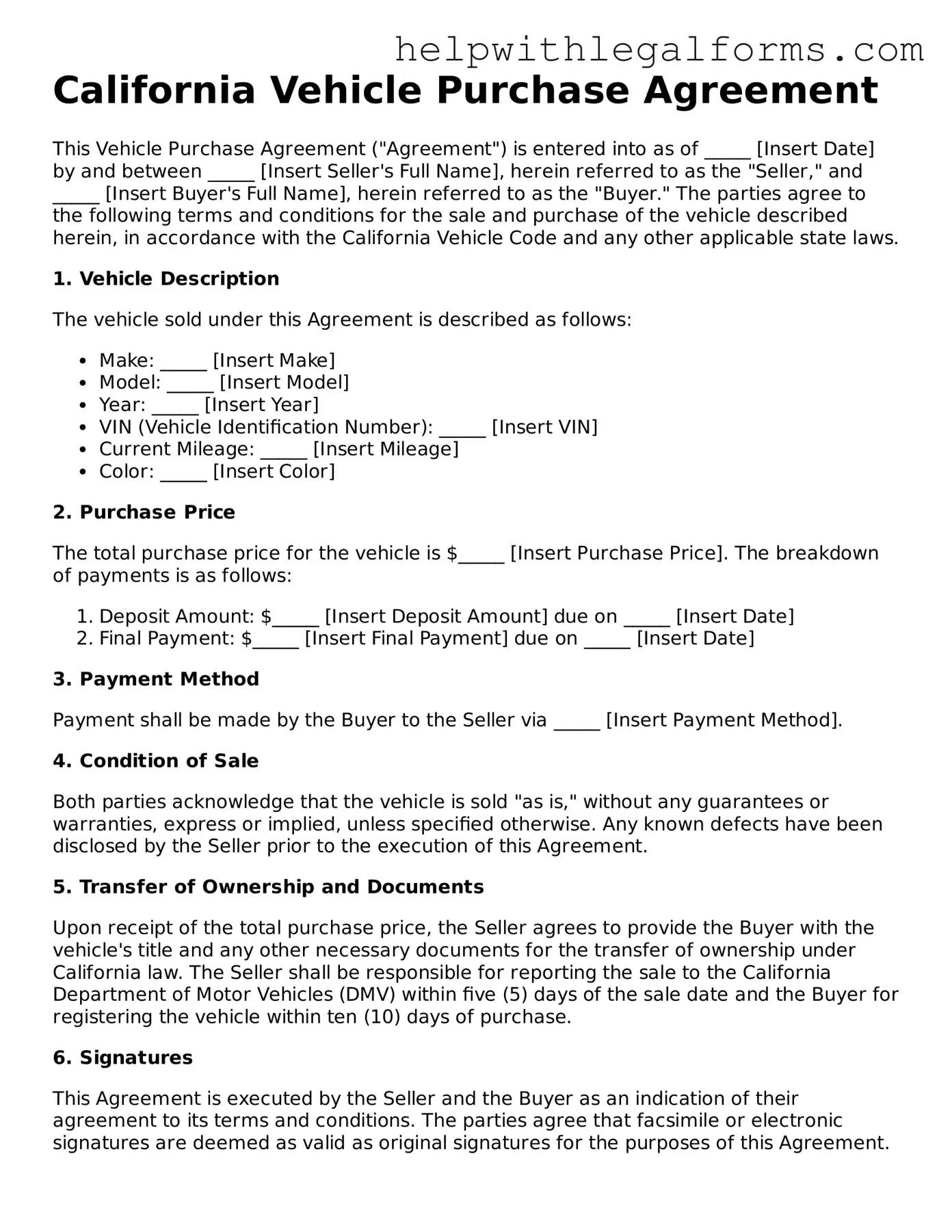California Vehicle Purchase Agreement
This Vehicle Purchase Agreement ("Agreement") is entered into as of _____ [Insert Date] by and between _____ [Insert Seller's Full Name], herein referred to as the "Seller," and _____ [Insert Buyer's Full Name], herein referred to as the "Buyer." The parties agree to the following terms and conditions for the sale and purchase of the vehicle described herein, in accordance with the California Vehicle Code and any other applicable state laws.
1. Vehicle Description
The vehicle sold under this Agreement is described as follows:
- Make: _____ [Insert Make]
- Model: _____ [Insert Model]
- Year: _____ [Insert Year]
- VIN (Vehicle Identification Number): _____ [Insert VIN]
- Current Mileage: _____ [Insert Mileage]
- Color: _____ [Insert Color]
2. Purchase Price
The total purchase price for the vehicle is $_____ [Insert Purchase Price]. The breakdown of payments is as follows:
- Deposit Amount: $_____ [Insert Deposit Amount] due on _____ [Insert Date]
- Final Payment: $_____ [Insert Final Payment] due on _____ [Insert Date]
3. Payment Method
Payment shall be made by the Buyer to the Seller via _____ [Insert Payment Method].
4. Condition of Sale
Both parties acknowledge that the vehicle is sold "as is," without any guarantees or warranties, express or implied, unless specified otherwise. Any known defects have been disclosed by the Seller prior to the execution of this Agreement.
5. Transfer of Ownership and Documents
Upon receipt of the total purchase price, the Seller agrees to provide the Buyer with the vehicle's title and any other necessary documents for the transfer of ownership under California law. The Seller shall be responsible for reporting the sale to the California Department of Motor Vehicles (DMV) within five (5) days of the sale date and the Buyer for registering the vehicle within ten (10) days of purchase.
6. Signatures
This Agreement is executed by the Seller and the Buyer as an indication of their agreement to its terms and conditions. The parties agree that facsimile or electronic signatures are deemed as valid as original signatures for the purposes of this Agreement.
Seller's Signature: _____ [Insert Signature] Date: _____ [Insert Date]
Buyer's Signature: _____ [Insert Signature] Date: _____ [Insert Date]
7. Miscellaneous
This Agreement constitutes the entire agreement between the Seller and the Buyer and supersedes all prior discussions, agreements, or understandings of any kind. Any amendments to this Agreement must be in writing and signed by both parties.
